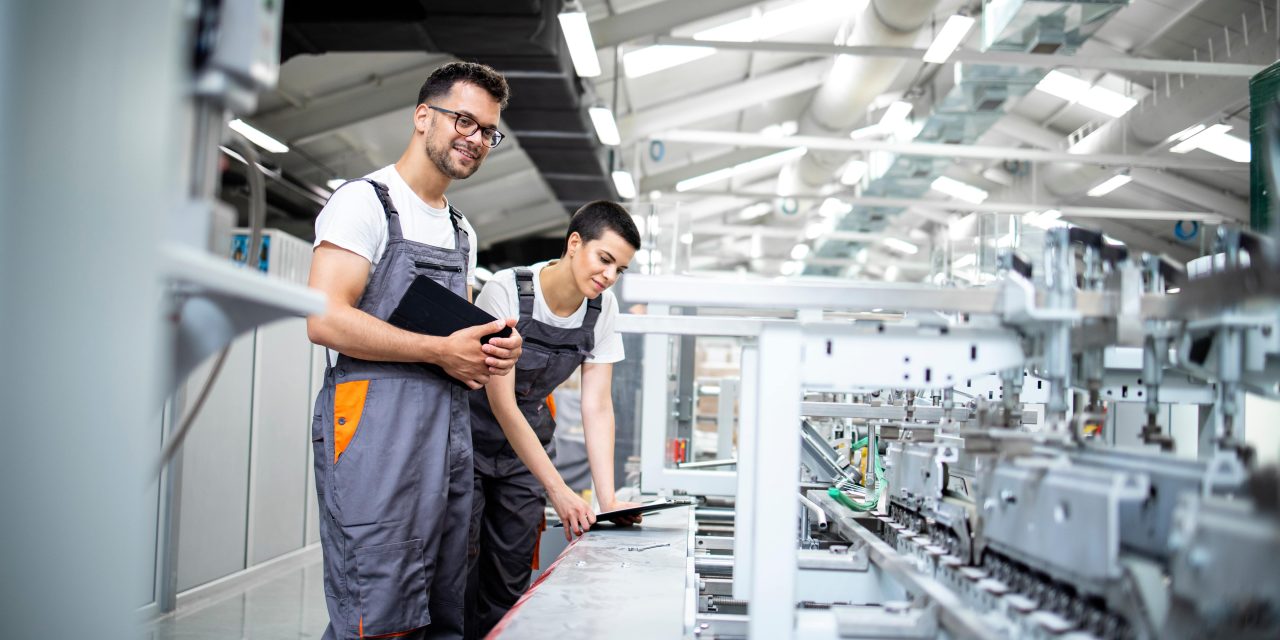In the ever-evolving landscape of the light industrial and factory industry, the workforce is experiencing a seismic transformation. The traditional idea of a factory worker has undergone significant changes over the last 50 years, reflecting shifts in the age, gender and cultural backgrounds of workers.
As we navigate the modern era, it becomes crucial for businesses in this sector to reinvent their approach to workforce strategies.
Workers today seek greater flexibility and work-life balance, and they expect employers to provide new jobs that align with their needs.
Here, we will delve into the changing workforce landscape in the light industrial/factory industry and explore the implications of demographic shifts, the demand for new kinds of jobs, and the pressing need for innovative workforce strategies.
The Changing Workforce Landscape in the Light Industrial/Factory Industry
As the light industrial and manufacturing sectors embrace the modern era, the workforce landscape is undergoing a profound transformation. The traditional image of factories solely relying on young men for manual labor has given way to a more diverse — and dynamic — workforce. This shift is fueled by both societal changes and technological advancements.
Over the last 50 years, the industry has witnessed a steady rise in gender diversity. Women are occupying roles at all levels of the light industrial and manufacturing workforce, from production lines to management positions. As a result, this has widened the labor force pool and created countless new opportunities. However, progress is still being made in achieving full gender parity as companies find better ways to ensure the unique workplace needs of women are met.
Moreover, the factory industry is experiencing a surge in the representation of individuals from diverse cultural backgrounds. Businesses that help workers of all different kinds of backgrounds and cultures understand what it will take to succeed in their position — and equip them with the tools they need to win at work — will foster a stronger sense of belonging among employees, leading to increased motivation and productivity.
Another significant demographic shift is the increasing presence of older workers in the industry. With life expectancies rising and people choosing to work beyond traditional retirement ages, experienced employees are playing a crucial role in today’s workforce. Their wealth of knowledge and skills are valuable assets that businesses can leverage to enhance productivity and overall operations.
Additionally, the industry is witnessing the entry of a new generation of workers — Generation Z. Gen Z brings unique skills and expectations to the factory floor. Their fluency in digital tools, their desire for meaningful work experiences, and their emphasis on work-life balance are factors that forward-thinking companies are keen to harness.
The changing workforce landscape in the light industrial/factory industry calls for a paradigm shift in how businesses approach talent management. Companies must adopt inclusive hiring practices that attract a diverse set of individuals into their workforces, or they will be left behind.
Demographic Changes Mean Workers Want New Kinds of Jobs (Including More Flexible Options)
As the factory workforce experiences significant demographic changes, the expectations and preferences of workers have evolved, leading to a demand for new kinds of jobs and increased emphasis on flexibility. Understanding these shifting priorities is paramount for businesses seeking to attract and retain talent in the modern era.
Embracing Work-Life Balance
Workers today, regardless of age, are placing a higher value on work-life balance. Many employees seek jobs that offer flexibility in terms of working hours and remote work options. Because remote work is usually not an option in the industrial sphere, giving workers more freedom to choose their hours is a great option. A healthy work-life balance allows workers to manage personal commitments better while staying committed and engaged in their professional roles.
Adapting to Technological Advancements
We are in the midst of a technology revolution. As manufacturing workers develop increasingly sophisticated machines and tools, Gen Z is ready to work alongside technology and integrate with innovations. The influx of younger workers from Gen Z has brought a preference for jobs that leverage technological advancements and incorporate digital tools and automation to drive efficiency and innovation. Companies that embrace technology and provide opportunities for digital skill development will be better positioned to attract and retain tech-savvy workers.
Flexibility in Career Paths
Workers today no longer expect to have a linear career path within the same organization. They seek opportunities to explore different roles and career paths within the same company or even across industries. Employers can foster this desire by implementing mentorship programs, job rotation initiatives and providing clear pathways for growth and advancement.
The Worker Shortage and Its Implications on Workforce Strategies
The factory industry is currently facing a significant worker shortage, a challenge that has intensified in recent years. As experienced workers retire and demographic shifts change the landscape, there is a need for businesses to adopt a different approach.
The traditional recruitment and retention methods may not suffice in attracting and retaining top talent. Companies need to be proactive in addressing the root causes of the worker shortage and adapting their strategies accordingly.
Businesses must now invest in employer branding, showcasing a workplace that values employee well-being, career growth, and work-life balance. Offering competitive compensation packages and benefits can make the company more appealing to potential candidates.
Additionally, it is essential to engage with educational institutions and vocational programs to promote the factory industry as an attractive career option. Investing in upskilling and training programs to equip workers with the necessary skills for the future is also beneficial.
The Need for HR Directors and C-suite Executives to Adapt and Rethink Workforce Strategies
As the factory industry evolves, HR directors and C-suite executives play a pivotal role in shaping the future of their organizations. Acknowledging the need to rethink workforce strategies is essential to navigating the complexities of the modern era.
HR directors and C-suite executives must embrace flexibility and innovation. Recognizing the diverse needs and expectations of employees, they should actively explore new kinds of jobs that cater to different career stages and offer flexible work arrangements.
To address the worker shortage and ensure a skilled workforce, HR directors and executives must also invest in talent development. Providing training and upskilling opportunities demonstrates a commitment to employee growth and career progression. Offering mentorship programs and career pathways can also foster employee loyalty and engagement and reduce turnover rates.
By rethinking these workforce strategies, executives can create a sustainable pipeline of skilled workers, ensuring the organization’s success well into the future.
Collaborating with a Staffing Partner
In navigating the complexities of the changing workforce landscape, HR directors and executives can benefit from collaborating with staffing partners like The Ōnin Group. As a nationwide staffing company with expertise in the light industrial and factory industry, The Ōnin Group offers valuable insights and solutions to address talent shortages and implement effective workforce strategies.
Contact The Ōnin Group Today
To explore how the Ōnin Group can assist in rethinking your workforce strategies and overcoming the worker shortage, contact us today. Our team of experts is ready to partner with you in navigating the changing landscape and ensuring a skilled, diverse, and adaptable workforce for your business’s continued growth and success.






